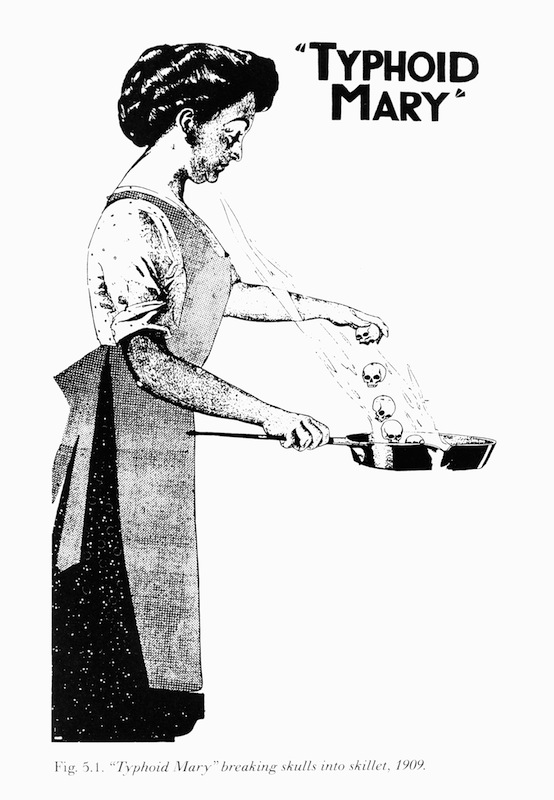
In the early 1900s, when typhoid fever was associated with slums and their dismal sanitation, epidemiologists — and everyone else — wanted to know why an outbreak of the deadly bacterial infection suddenly emerged in Long Island’s tony Oyster Bay, among the summer homes of wealthy New Yorkers.
The answer turned out to be a cook who trailed typhoid wherever she went. And while Mary Mallon responded by brandishing a meat fork whenever public officials tried to test her, she proved to be a carrier for the disease, which was fatal to about one in 10 people who acquired it, even though she herself was immune to its effects.
Her extreme contagiousness (the New York Times called her “a veritable peripatetic breeding ground for the bacilli”) coupled with her refusal to comply with health officials’ orders not to endanger the public — say, by cooking for them — led to her lengthy involuntary isolation and to her moniker: Typhoid Mary.
It’s a name that invariably crops up whenever the debate over treatment of potential disease-carriers reenters the public discourse, as it did last month when a nurse returning from Sierra Leone was quarantined in a tent for three days. Although the nurse — who tested negative for Ebola — later balked at a voluntary three-week quarantine at her home in Maine, she faced nothing close to what Mary endured: more than a quarter-century of isolation on a “pest island” in the East River that ended with her death on this day, Nov. 11, in 1938.
For officials who, then as now, walked a fine line between protecting the public and preserving the civil rights of individuals who might pose a health risk, Mary presented a complicated case. The picture of health, despite her habit of infecting her employers, she refused to believe that she could make others sick without being sick herself, and swore until the day she died that she wasn’t responsible for the epidemic that perpetually followed in her wake.
That key difference between typhoid and Ebola — the latter of which is only contagious when the infected person is symptomatic, whereas Mallon was extremely contagious but never symptomatic — is also why Typhoid Mary’s usefulness as a current-events talking point is limited. Her resistance to quarantine was not based on science, and her health made it particularly hard to hold her to her promises. For example, she swore not to take another job as a cook when she was released in 1910, after three years of isolation in Riverside Hospital on the now-abandoned North Brother Island. Health officials lost track of her for a few years, but found her again in the midst of another typhoid outbreak, this time at a Manhattan maternity hospital where 25 people, mostly doctors and nurses, were infected. Mary had been cooking there under a fake name, but fled before health officials could catch her. They traced her to a house in Queens, where they had to sneak in through a second-story window, using a ladder, to apprehend her, according to the Times report on the event.
From there, it was back to isolation — for 23 more years, the rest of her life. Her obituary in the Times blamed her for 51 cases of typhoid and three deaths. Putting her age at roughly 68, the obit noted that “while her system was loaded with typhoid germs to such an extent that some physicians referred to her as the human culture tube, it was not typhoid that caused her death,” but the effects of a stroke she’d suffered six years earlier.
Read a 1928 report on New York City’s isolation island, here in TIME’s archives: Public Health
More Must-Reads from TIME
- Cybersecurity Experts Are Sounding the Alarm on DOGE
- Meet the 2025 Women of the Year
- The Harsh Truth About Disability Inclusion
- Why Do More Young Adults Have Cancer?
- Colman Domingo Leads With Radical Love
- How to Get Better at Doing Things Alone
- Michelle Zauner Stares Down the Darkness
Contact us at letters@time.com